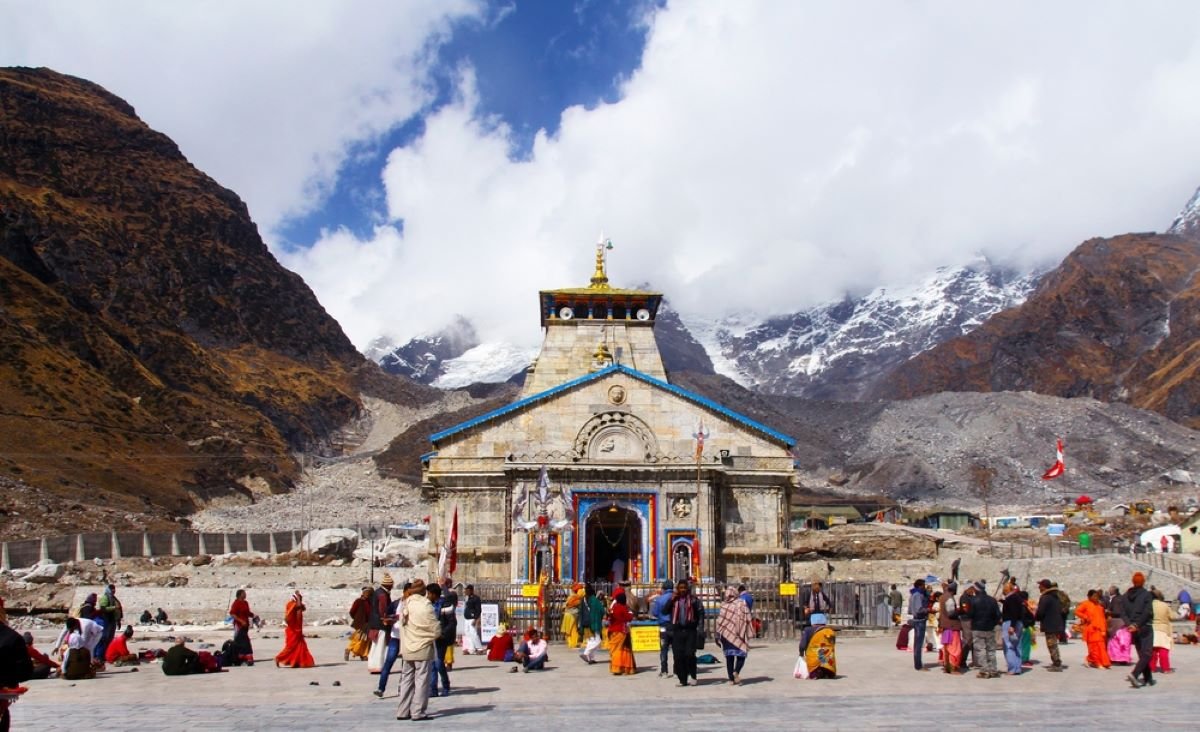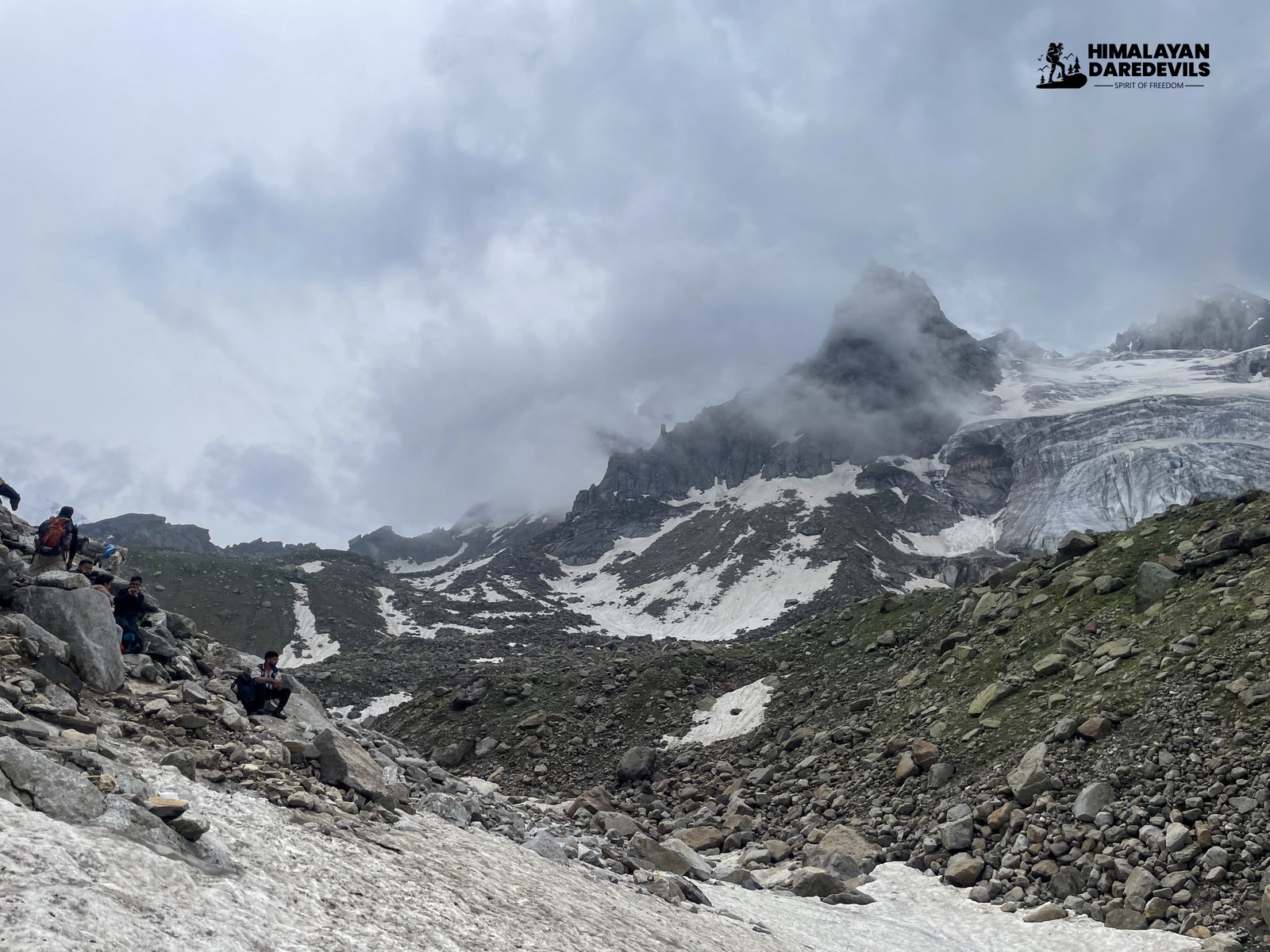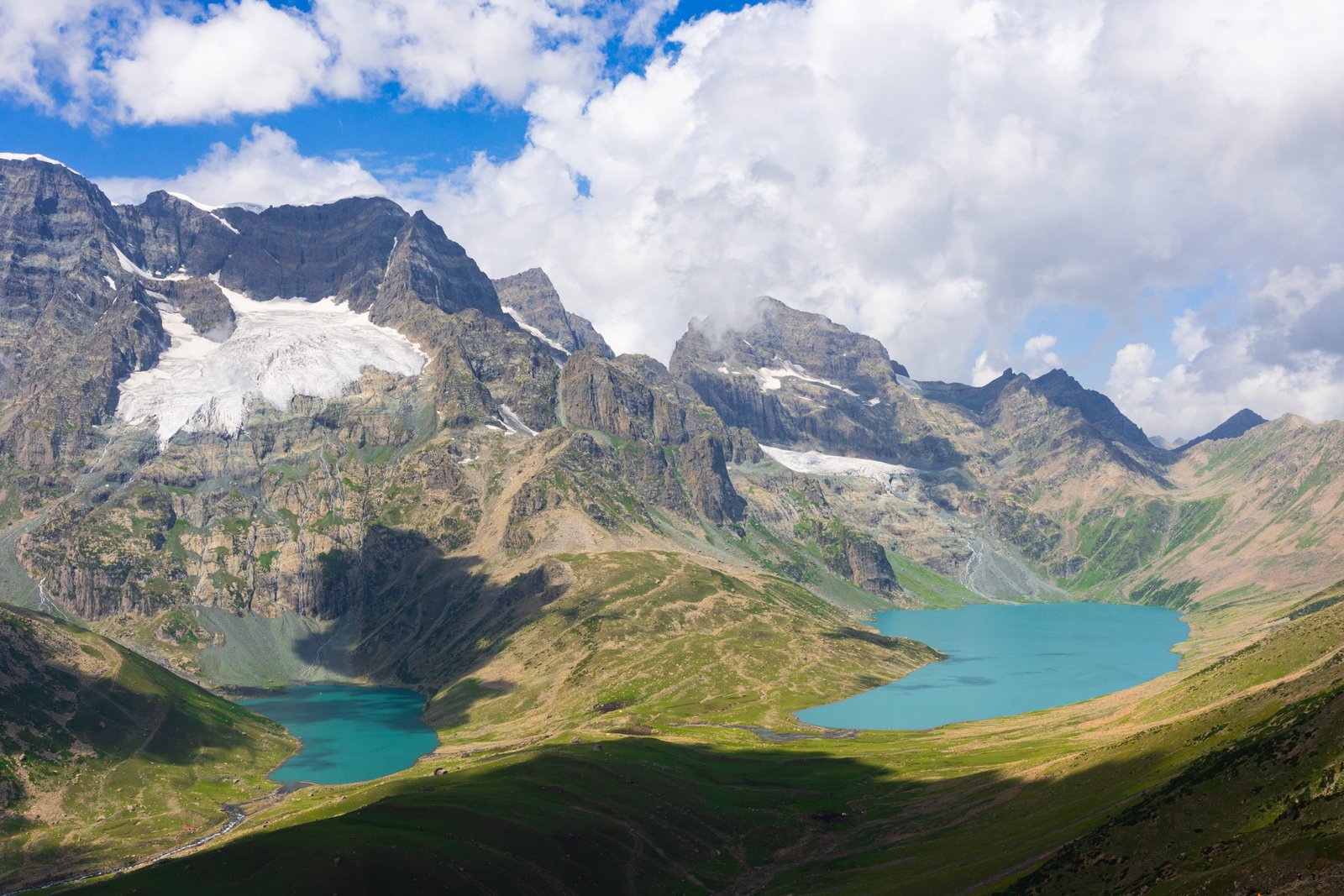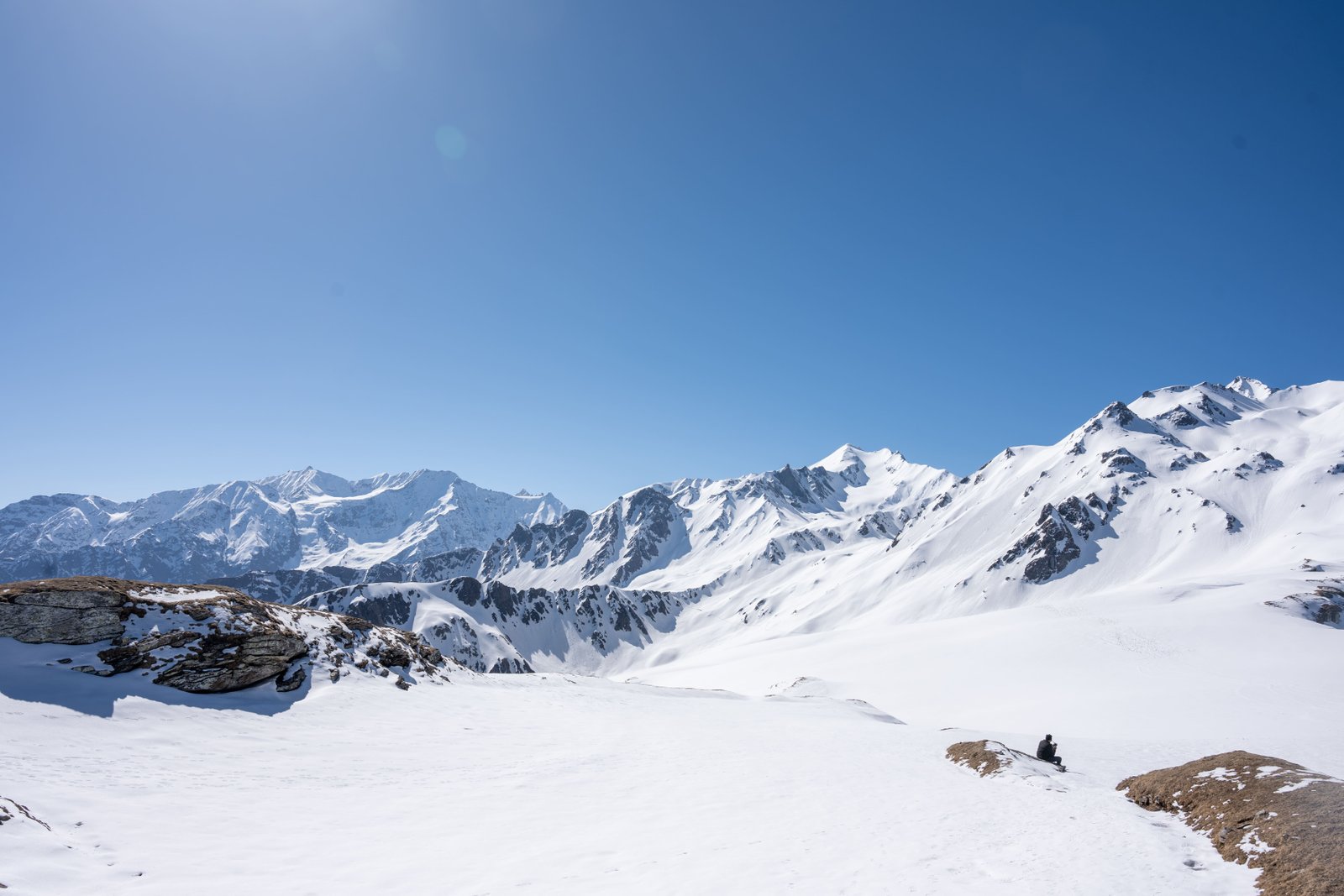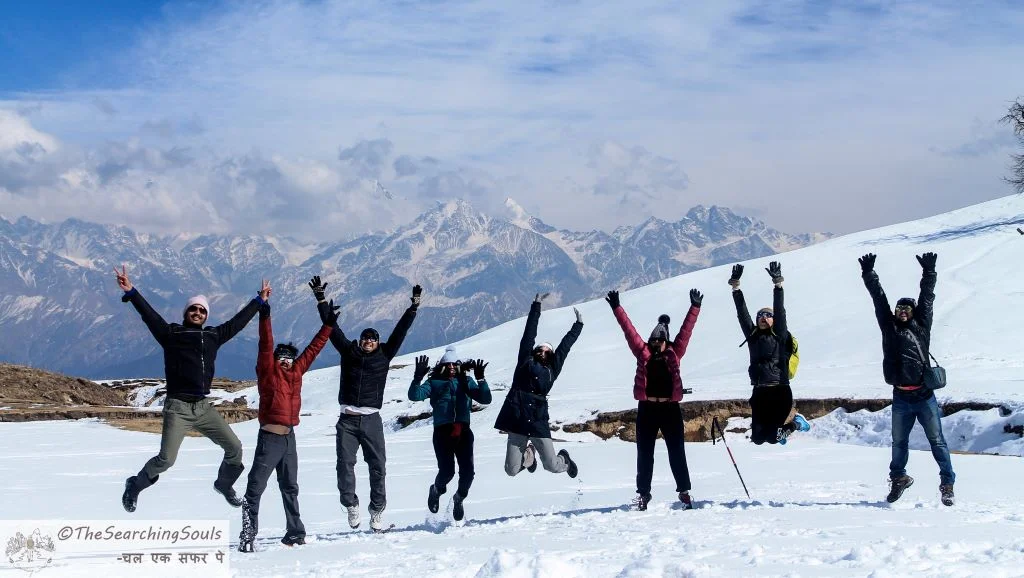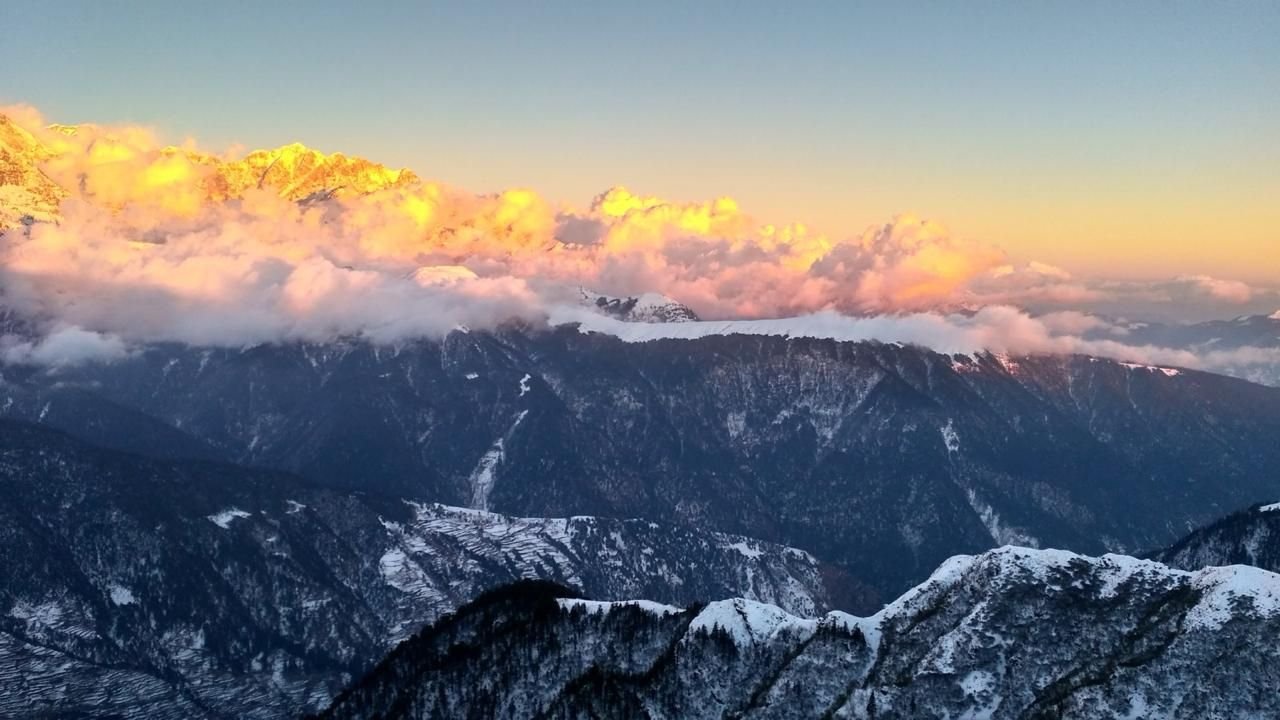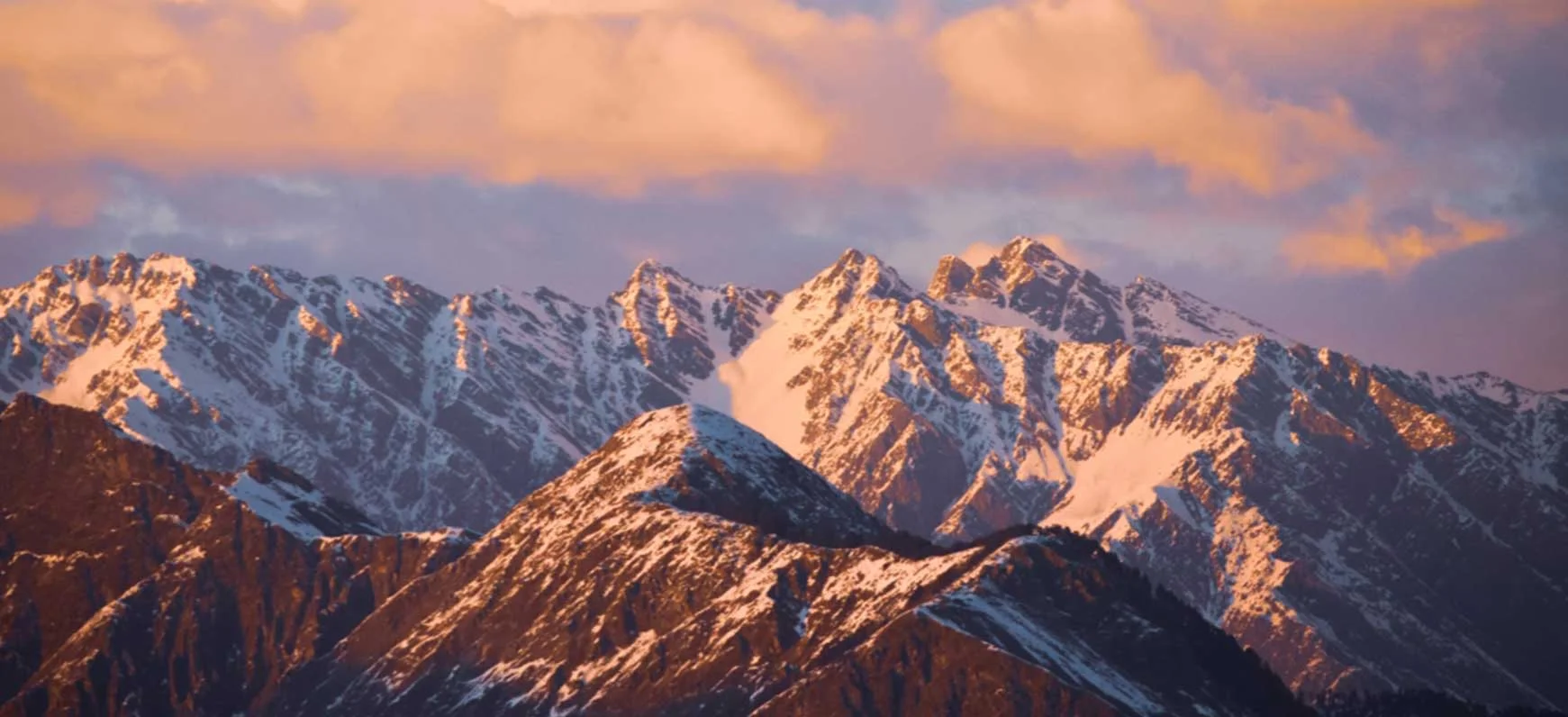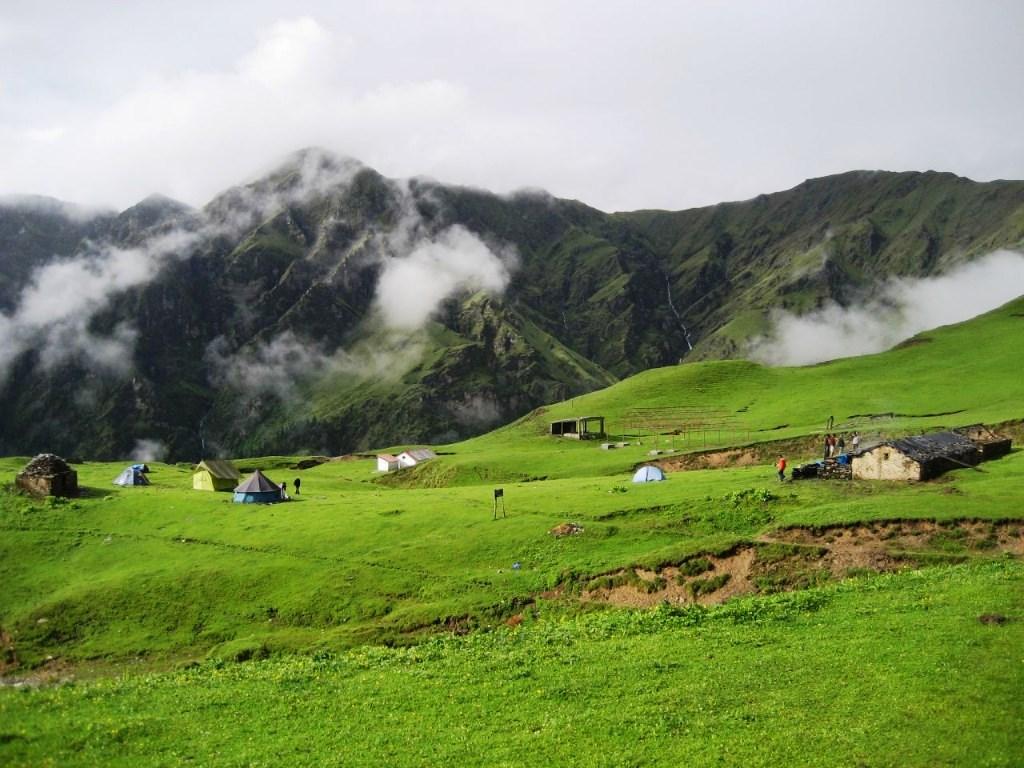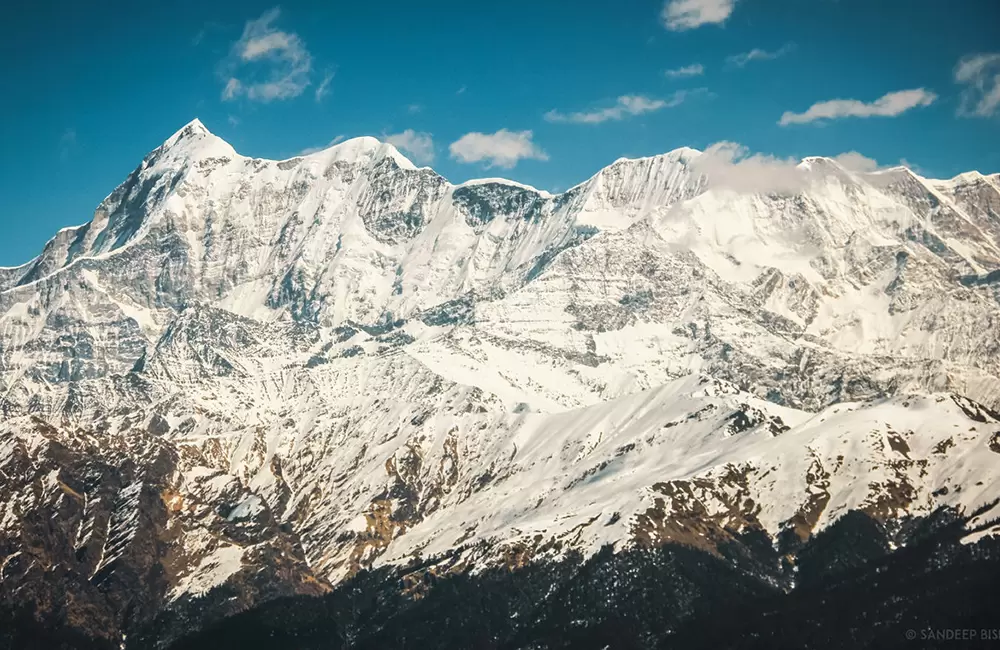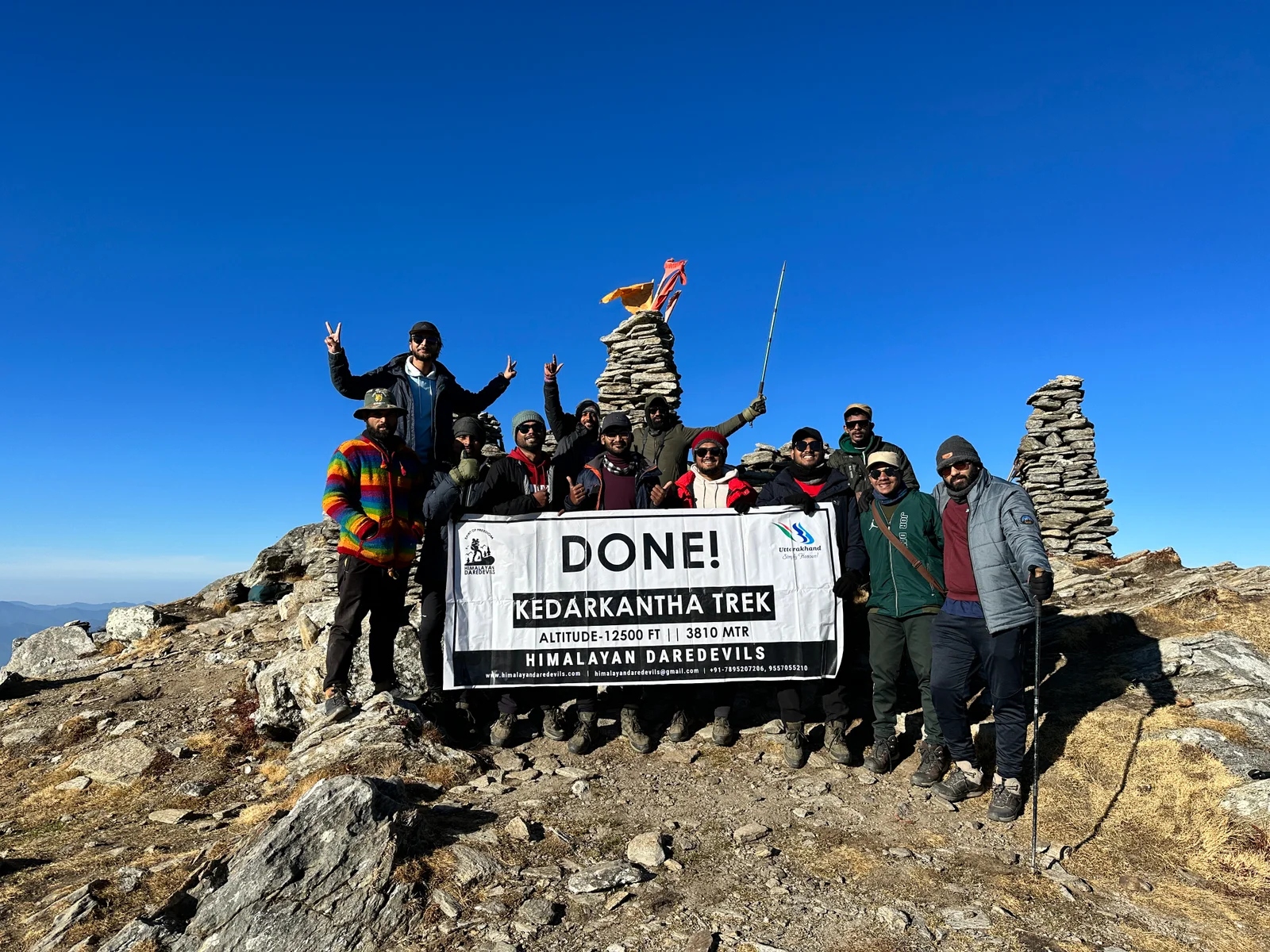25 April 2025
The Kedarnath temple situated in the Rudrapryag district of Uttarakhand is one of the holiest and most revered pilgrimage sites in India, attracting thousands of devotees every year from every part of India and the world. The Kedarnath Dham takes its name from a combination of two Sanskrit words ‘Kedar’ which means fields and ‘Nath’ meaning lord.
The Hindu scriptures say about Kedarnath that ‘the crop of liberation grows here’. The wish to be liberated and to enjoy the scenic beauty of the iconic Kedarnath Dham mandir with the Chorabari glacier behind it pulls thousands to take part in the Kedarnath Yatra every year.
Where is Kedarnath Temple Located ?
At a height of 3,583 m (11,755 ft) the ancient Kedarnath temple dedicated to Lord Shiva is situated in the Rudrapryag district of Uttarakhand and is approximately 260 km from Dehradun and 500 km from the national capital Delhi. With the rugged himalayan mountain surrounding it and the glacial river mandakini flowing next to it, the ancient Kedarnath temple is a part of the bigger Kedarnath Wildlife Sanctuary.
How to plan your Kedarnath Temple Yatra ?
The Kedarnath Dham Yatra goes on for 6 months, starting from late April to early November each year and it is essential to plan for it properly.
Best time to visit Kedarnath
The Kedarnath Temple remains open to the devotees for six months starting from late April to early November and the best time to visit would be to avoid the monsoon months of June and September as the weather of the mountains can make the Yatra difficult.
Accommodation
In Gaurikund: Hotels, Guesthouses and Dharamshala are easily available at Gaurikund
In Kedarnath: Guesthouses tents and dharamshalas are available at Kedarnath. The accommodation gets booked quickly during the peak seasons so it is essential to plan ahead.
Physical Fitness
To fully enjoy the beautiful views that welcome you on your way to Kedarnath Temple, you must be in good shape. The 16 km trek can take a toll on the physically weak. To achieve the desirable fitness you should jog for 4 days a week and aim at Jogging for 5 kms comfortably.
How To Reach Kedarnath Base Camp
Haridwar and Rishikesh are two common starting points for the Kedarnath Dham Yatra both of which are well-connected by road, rail, and air. Here’s how you can reach Haridwar or Rishikesh:
By Air:
The nearest airport to Haridwar is the Jolly Grant Airport in Dehradun, which is approximately 35 kilometers away. From the airport, you can hire a taxi or take a bus to reach Haridwar or Rishikesh.
Alternatively, you can also fly to Delhi, which is well-connected to major cities in India and abroad. From Delhi, you can take a connecting flight to Dehradun or take a train or bus to Haridwar or Rishikesh.
By Train:
Haridwar and Rishikesh are both well-connected by train to major cities in India. Haridwar Junction and Rishikesh Railway Station are the two main railway stations in the region.
Several trains operate to Haridwar and Rishikesh from cities like Delhi, Mumbai, Kolkata, Chennai, and others.
Once you reach Haridwar or Rishikesh by train, you can hire a taxi or take a bus to proceed further on your Do Dham Yatra.
By Road:
Haridwar and Rishikesh are well-connected by road to major cities in North India.
National Highway 58 connects Delhi to Haridwar via Meerut and Roorkee, while Rishikesh is just a few kilometers away from Haridwar.
State-run buses, as well as private buses, operate regularly between Haridwar, Rishikesh, and other nearby towns and cities.
You can also opt to drive to Haridwar or Rishikesh from nearby cities like Delhi, Dehradun, or Chandigarh.
Highlights Of The Kedarnath Journey
Kedarnath Temple
The major attraction of the Kedarnath Dham Yatra is the Kedarnath Temple itself. The Kedarnath temple with its beautiful architecture surrounded by the snow capped himalayan peaks is truly mesmerizing to witness after a long trek to reach it.
Evening Aarti at Kedarnath Temple
The atmosphere during the evening aarti is filled with divinity and spirituality. The temple glowing, the bells ringing and hundreds of devotees chanting in unison all in the himalayan wilderness is awe inspiring to say the least.
Bhairavnath Temple
At almost 500 m uphill from the kedarnath temple the Bhairavnath temple is dedicated to lord Bhairavnath who is the guardian deity of Kedarnath and the main gana of Shiva. On reaching the Bhairavnath temple one gets a spectacular bird's eye view of the Kedarnath Temple and the mountains surrounding it.
Vasuki Tal
Vasuki Tal is a glacial lake at a height of 14,200 ft from the sea level. It is about 8 km from the kedarnath temple and is a great spot to see the Himalayan flora like the Brahma Kamal.
Distance, Elevation and What to Expect on the Route
Distance: The motor road to Kedarnath temple stops at Gaurikund and beyond that pilgrims have to walk for about 16 kms to reach the Kedarnath Dham. The journey from the Indian plains to the valley of Kedarnath Uttarakhand is filled with beautiful vistas of green himalayan mountains and perennial glacial rivers.
Elevation: You start the trek to Kedarnath Dham from Gaurikund, which is at an elevation of 6,504 ft, and reach the Kedarnath Temple which is at a height of 11,755 ft gaining almost 5,000 ft in just 16 kms.
Route Overview: The journey to reach Gaurikund is easy. The recently completed all weather road to Kedarnath Dham makes travelling by road enjoyable, experiencing the himalayan beauty along the way.
The trek from Gaurikund to kedarnath is 16 km long and offers a mixed terrain. You will mostly trek on well built pathways with natural tails scattered in places.
Packing List for Kedarnath Temple Yatra
Trekking shoes: A good pair of trekking shoes that provide good ankle support and good grip to deal with a variety of terrain.
Backpack: : A backpack with rain cover (50-60 ltr) to keep your belongings safe and in one place.
Thermals (upper and lower): Thermals to help regulate your body temperature in the cold himalayan weather.
3 T-shirts :A quick-drying T-shirt made from breathable and moisture-wicking materials. This will help keep you cool and dry during your trek.
2 trek pants: Lightweight and comfortable trek pants that are easy to move in and can dry quickly if wet.
Jacket (-10 degrees): A warm jacket that is waterproof and windproof, and provides good insulation.
Fleece or hood (2): At least two Fleece jackets or hoodies, which can also be used as an extra layer at night.
Sunglasses (UV protected): To Protect your eyes from the sun's harmful UV rays.
Sun cap: A sun cap or hat with a brim will protect your face and neck from the sun.
Hand gloves: A pair of lightweight gloves to keep your hands warm and protected from wind and sunburn.
Woolen cap: A woolen cap to keep your head and ears warm at night or in cold weather.
Socks (3 pairs min):At least three pairs of good quality socks that are moisture-wicking and provide good cushioning and support for your feet.
Headlamp: A headlamp for hiking in low-light conditions
Trekking pole (if needed): Trekking poles to reduce strain on your legs and provide additional support on steep terrain.
Rain cover\poncho: A rain cover or poncho to keep you and your gear dry during unexpected rain showers.
A toiletry kit: A small kit with personal hygiene items, such as a toothbrush and toothpaste, wet wipes, hand sanitizer, and toilet paper.
Lunchbox, cup, spoon: If you plan to bring your own food, bring a lunchbox, cup, and spoon to carry and eat your meals.
2 one-liter bottles: Staying hydrated is crucial, so bring at least two one-liter bottles to carry water.
2-3 plastic covers: Plastic bags are useful for keeping wet or dirty clothes separate from the rest of your belongings. They can also be used to pack out any trash or waste you generate during the trek.
Food and Accommodation Options During the Kedarnath Yatra
The hotel in and on the way to Kedarnath Temple provides food at a reasonable price. The food available is purely vegetarian and includes Maggie, parathas, snacks and hot beverages.
Best Time to Visit Kedarnath Temple Uttarakhand
The Kedarnath Dham Yatra starts when the Kedarnath Temple opens its doors to the devotees on the first day of Vaishakh (April - May) and the Yatra season ends on the first day of Karthik (October - November). The winter sees the trek covered in deep snow.
Summers (May-June)
The best months to visit lord Kedarnath are the months between May and June. The temperature around this time ranges from 15 to 30 degrees. The weather remains pleasant during this time.
Monsoon ( July - August)
The heavy monsoon rain interferes with the transportation service making travel difficult. The construction of the all weather road to the Kedarnath Dham has made it easier and safer to travel, still the heavy downpour during these months can cause roadblocks.
Winter (November - April)
The temperature during winter plummets down to sub zero level and the Kedarnath Temple is closed for tourists.
Challenges You May Face During Kedarnath Yatra
The Kedarnath Dham Yatra is a spiritual journey taking you to the deep himalayas to walk in the footsteps of great devotees and sages from the past who took the same path to visit the ancient Kedarnath Temple. Owing to the remoteness of Kedarnath, there are many problems one might face but it is easy to deal with them too.
Physically challenging trek
The Kedarnath Dham trek starting from Gaurikund goes on for 14 KMs. The trek to reach the kedarnath temple contains a mixture of well constructed pathways to rocky and uneven natural trails. The steep slopes and rolling descents can be physically demanding and would require one to prepare themselves in advance by doing proper exercise.
Weather Conditions
The weather in the Himalayas is known for its unpredictability. One moment there is a blue sky above you with warm sunshine falling down on your face, but in a blink of an eye you find yourself drenched in cold showers. Dealing with such unpredictability requires prior preparation and appropriate gear like good shoes and raincoat.
Limited Accessibility
The Kedarnath Yatra takes place in a remote part of the Himalayas and this remoteness has made it difficult to provide some basic necessities like good medical aid or quick accommodation throughout the region. This makes it essential that the pilgrims come on the Kedarnath Yatra with first getting a proper check up from a doctor and to book hotels in advance.
Altitude sickness
The Kedarnath Dham at a height of 11,755 ft can cause altitude sickness if one tries to ascend too fast without taking brakes. Altitude sickness can cause dizziness and nausea along with lightheadedness and headache. To avoid it is required that the pilgrim ascends slowly to acclimatise.
Final Tips for a Fulfilling and Spiritual Experience
The Kedarnath Yatra is a spiritual journey that takes you along curving mountain roads to ancient himalayan trails that reach the Kedarnath Temple. A temple standing in the same spot as it had been years before welcoming eager devotees from different corners. The yatra due to its remote locations comes with many challenges, the tough terrain, the unpredictable weather, the unavailability of accommodation and transportation.
All this makes enjoying the beautiful sceneries a tad difficult, but by allowing Himalayan Daredevils to deal with all of this and provide you with the good accommodations and guides you can be free to enjoy the kedarnath yatra and nature with full freedom.
